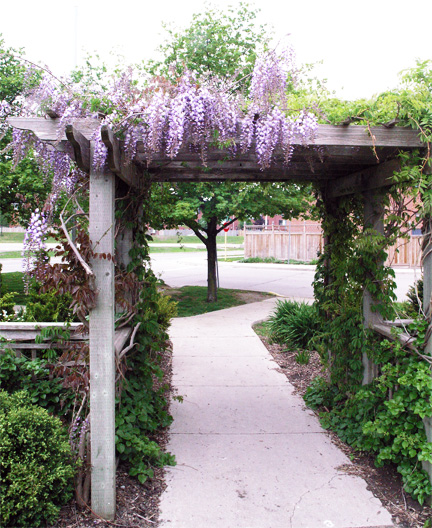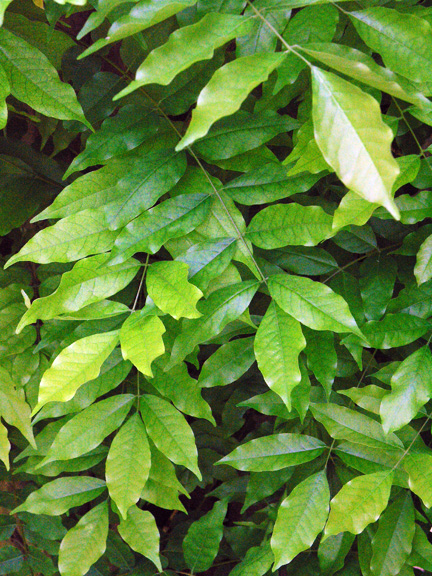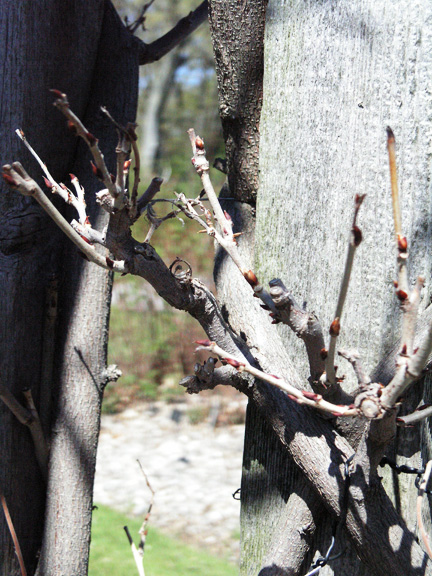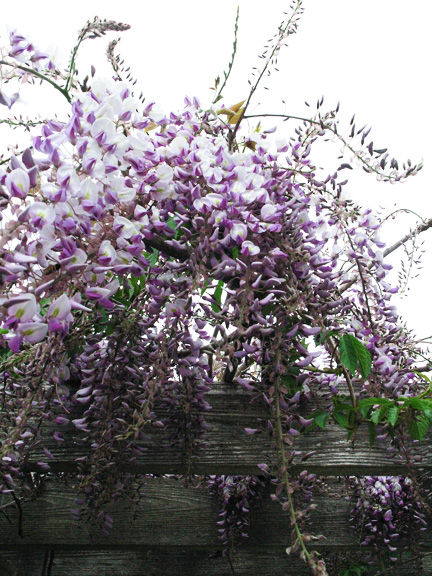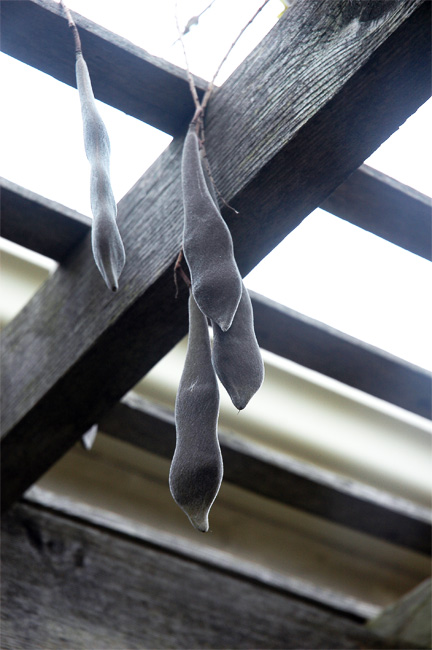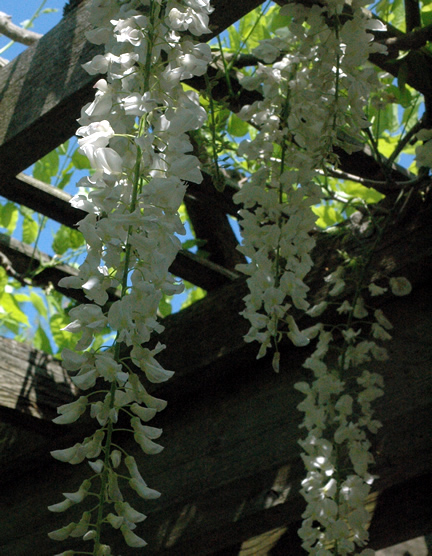| General Description | Vigorous, beautifully flowering vine with clockwise twining stems. Great for growing on large structures or trained into a standard form.
|
| ID Characteristic | Quite similar to W. sinensis. Leafs out two weeks before W. sinensis and may be injured by late spring frosts. W. floribunda stems twine clockwise while W. sinensis twine counterclockwise.
|
| Shape | Stout vine, climbs by twining stems clockwise. |
| Landscape | Outstanding flowering vine; excellent for walls and pergolas.
|
| Propagation | Seeds germinate without treatment, collect seed in autumn and sow directly; soak for 24 hours if dry. June/July cuttings rooted without treatment.
|
| Cultivation | Require considerable care; can be found strangling structures/other plants. Needs pruning (and root pruning) in late winter or after flowering. Needs ample support with metal pipe or stout timber.
|
| Pests | Susceptible to many; leaf spots, stem canker, root rot, Japanese mealybug, fall webworm, and crown gall to name a few.
|
| Notable Specimens | The Gardens of Fanshawe College, London, Ontario, Canada. The A. M. (Mac) Cuddy Gardens, Strathroy, Ontario, Canada. |
| Habitat | Anywhere with deep, moist, well-drained loam. A vigorous grower where naturally occurring (south). |
| Bark/Stem Description | Greyish colour on old trunks, smooth and sometimes with irregular rounded, lengthwise ridges.
|
| Flower/Leaf Bud Description | "Narrowly oblong, come to a point. Three outer scales, one surrounding the entire bud. Reddish brown and pubescent. |
| Leaf Description | Alternate, pinnately-compound, 25-38 cm long. Rounded at base and come to a point. Leaves are bright green and typically late to leaf out.
|
| Flower Description | Long, pendulous clusters of violet or violet-blue, fragrant flowers in late spring. Perfect, open from base to apex. Individual flower 13-19mm long.
|
| Fruit Description | Long, brown, velutinus pod persisting from October into winter. 10-15 cm long.
|
| Colour Description | Leaves occasionally turn butter yellow in autumn, new growth often bronze or purplish. |
| Texture Description | Medium in leaf, somewhat course in winter. Bark medium.
|
